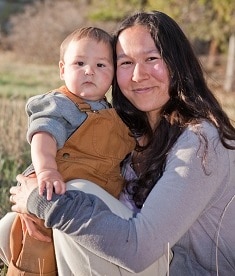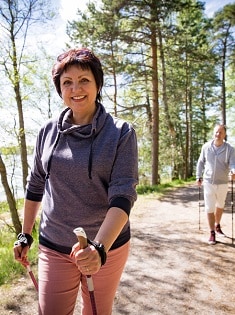Public Health Funding in Rural Communities
How CDC Funds and Guides Grantees to Work in Rural Communities

People who live in rural areas of the United States are more likely than urban residents to die prematurely from heart disease, cancer, unintentional injury, chronic lower respiratory disease, and stroke.
CDC’s National Center for Chronic Disease Prevention and Health Promotion uses several approaches to help improve the health of rural residents. One approach is funding and guiding states, universities, territories, and tribes to reach rural populations with proven interventions and innovative projects. Examples of efforts to help specific populations are described below.
Mississippi Delta Counties Where Heart Disease Risk Is High
High blood pressure can lead to heart disease and stroke and is common among residents of the rural Mississippi Delta region. Adults in this 18-county region may face challenges in accessing health care and taking blood pressure medicine as prescribed.
With CDC funding, the Mississippi State Department of Health created the Mississippi Delta Health Collaborative to prevent and control high blood pressure among local residents and reduce health disparities associated with high blood pressure. The collaborative has partnered with community health workers, pharmacists, community organizations, local leaders and businesses, and faith-based groups to improve screening and care for heart disease and stroke and to identify and address medication challenges.
Rural Counties With High Obesity Rates

CDC’s High Obesity Program (HOP) funds land-grant universities to work with community extension services to increase access to healthier foods and safe places for physical activity. These efforts focus on counties with an adult obesity rate of 40% or more, most of which are rural counties.
During 2014–2018, HOP reached over 1.6 million residents across 11 states in mostly rural communities in the South and Midwest. Accomplishments include:
- Setting healthier nutrition standards for food and drinks in public venues.
- Increasing access to healthy food retailers and safe places for physical activity.
- Promoting farm-to-preschool programs to increase access to fresh fruits and vegetables.
- Promoting physical activity and reducing screen time at early care and education centers.
- Making streets safer through community design initiatives.
For example, Auburn University, a HOP recipient, worked with 14 Alabama counties to create new walking and biking trails and start a Safe Routes to School program. This gave 105,000 people (32% of the county) better access to physical activity opportunities. In addition, farmers’ markets and food pantries increased access to fresh, healthy foods for 103,000 people.
Rural Counties With Limited Access to Diabetes Education and Prevention
Diabetes self-management education and support (DSMES) services help people with all types of diabetes better manage their blood sugar levels, develop coping skills, and reduce the risk for health complications. DSMES can also help lower health care costs by reducing the need for medicines and emergency room visits and identifying money-saving programs.
Rural populations have higher rates of diabetes compared to people who live in urban areas, but 62% of rural counties have limited access to DSMES services. People in rural areas have lower rates of participation in DSMES but are more likely to need it.
In rural communities, pharmacists and community health workers (CHWs) are often more accessible than other health professionals. CDC funds states to expand DSMES services to underserved populations and communities, including people living in rural areas, by engaging pharmacists and CHWs to deliver DSMES services. CDC also developed a practice-based guide to share lessons learned from DSMES programs that serve rural populations. The guide is designed to complement the DSMES Toolkit, which provides resources and tools for developing, promoting, implementing, and sustaining DSMES services.
The CDC-led National Diabetes Prevention Program (National DPP) is a public-private partnership working to build a nationwide system to deliver an affordable, evidence-based lifestyle change program to prevent or delay type 2 diabetes. Participants in the lifestyle change program learn to make healthy food choices, be more physically active, and find ways to cope with problems and stress. CDC has provided funding and guidance to expand the National DPP in underserved areas, more than half of which are rural.
American Indian and Alaska Native Communities

One of CDC’s largest investments to improve tribal health is the Good Health and Wellness in Indian Country (GHWIC) program, awarding about $19 million a year to support 27 tribes, tribal organizations, and Urban Indian Organizations across the United States. Recipients use funds to prevent type 2 diabetes, heart disease, and stroke and associated risk factors. They use a holistic approach to population health and wellness that incorporates locally developed and culturally appropriate strategies.
Many of GHWIC’s funded recipients are in rural areas and have already made progress toward the program’s goals. For example, the Pinoleville Pomo Nation in California adapted the National Diabetes Prevention Program (DPP) to be culturally relevant to its members and recruited two groups to participate in the year-long program. The first group had a 90% completion rate. While members of the second group cited many competing priorities for their time, they still had a 67% completion rate. Pinoleville’s National DPP is in the process of receiving full recognition as a CDC-recognized diabetes prevention program.
The Quawalangin Tribe of Unalaska in Alaska worked to improve its food systems by starting a Berry Picking for Elders program. Community volunteers, including youth, and tribal staff get physically active by gathering berries for and with 21 tribal elders, allowing them to connect socially and with the land. Other cultural benefits include learning from elders when and where to pick berries, and showing gratitude. The tribe also partnered with the Aleutian Housing Authority to share 30-pound boxes of salmon with 35 tribal elders, and with the Aleutian Pribilof Island Association to deliver healthy meal kits to tribal households, benefitting 154 tribal members.
Rural Areas With High Rates of Tobacco Use and Cancer
CDC funds the Geographic Health Equity Alliance (GHEA), a national network that works to eliminate geographic health disparities related to tobacco use and cancer. GHEA supports the use of effective public health practices in places that need them the most, including rural areas. It works closely with state tobacco and cancer programs and their partners to provide training and support to reduce health disparities and improve the health of communities.
For example, GHEA:
- Trained National Tobacco Control Programs and community coalitions in several states how to use comprehensive smokefree strategies to reduce geographic health disparities. Unequal access to smokefree laws is a driver of geographic health disparities.
- Led the Geographic Surveillance Learning Collaborative for National Tobacco Control and Comprehensive Cancer Control Programs, in partnership with the nonprofit organization Counter Tools. State teams worked together to share best practices and learn how their peers have used geographic surveillance systems to identify health disparities and improve their program planning and communications efforts.
- Collaborated with partners to create a toolkit with social media messages for specific audiences, including people living in rural communities, on issues related to tobacco prevention and cessation.
- Developed a series of online trainings to help states and communities identify and eliminate geographic health disparities and promote health equity in rural communities.
- Promoted the National Network of Public Health Institutes’ Advancing Tobacco Prevention and Control in Rural America report.
Rural Areas With Racial and Ethnic Minority Populations
The Racial and Ethnic Approaches to Community Health (REACH) program is at the forefront of CDC’s efforts to reduce racial and ethnic health disparities, including those found in rural communities. REACH strives to promote healthy behaviors and reduce chronic disease risk factors among people who are Black or African American, Hispanic or Latino, Asian or Asian American, American Indian or Alaska Native, and Natives of Hawaii or other Pacific Islands.
Culturally tailored interventions focus on good nutrition, community planning for physical activity, commercial tobacco use and exposure, and chronic disease prevention, risk reduction, and management. For example, Partners in Health (PiH) used REACH funding to:
- Set up or support community health teams (CHT), chronic disease self-management programs, and a fruit and vegetable prescription program for Navajo Nation residents.
- Develop a CHT curriculum and work with seven medical centers to create teams of clinic-based medical providers and community outreach workers.
- Partner with the New Mexico Department of Health’s Office of Community Health Workers to begin certifying community health workers (CHWs) from the Navajo Nation Department of Health.
PiH helped link over 90,000 American Indian residents of the Navajo Nation to better clinical and community services by training CHWs in 57 rural communities. REACH staff also trained and certified 15 CHWs in specialized clinical skills. Lead trainers in the CHW program receive continual support and coaching to help them build their skills.
People With Arthritis Living in Rural Counties

About 32% of adults in the most rural areas in the United States have arthritis (compared to 21% in the most urban areas), and more than half of them are limited in their everyday activities by this condition. Adults with arthritis can reduce or better manage their symptoms by being physically active or participating in proven arthritis-appropriate interventions, like Walk with Ease or the Chronic Disease Self-Management Program (CDSMP). These programs can reduce arthritis pain and improve freedom of movement, mood, and quality of life.
CDC also funds activities in several states to promote the health of adults with arthritis in rural areas. For example, the Utah Arthritis Program (UAP) at the Utah Department of Health is collaborating with a major health care system, a quality improvement organization, and local health departments to expand arthritis lifestyle management programs to rural and remote counties. UAP plans to strengthen the infrastructure in these counties to offer CDSMP workshops, thereby reducing disparities caused by the lack of program availability. Workshops are now offered in 22 communities.
New Fluoride Technology Supports Oral Health in Rural Areas

Drinking fluoridated water keeps teeth strong and reduces cavities by about 25% in children and adults. Community water fluoridation is the most efficient and cost-effective way to deliver fluoride to everyone in a community, regardless of their age, income, or education. However, about 35% of people in the United States do not have access to properly fluoridated water because their homes are not served by a public water system or their water systems are too small to use conventional fluoridation technology. People served by small water systems often live in rural areas with less access to high-quality health care, including dental care.
To help reach rural areas that cannot fluoridate their water, CDC supported the development of a new tablet delivery system. The new system could fluoridate about 32,000 small water systems in the United States, serving nearly 19 million people. Throughout its development, health departments across the United States and in other countries expressed interest in adopting this system to bring the benefits of fluoridated water to their communities at a low cost.